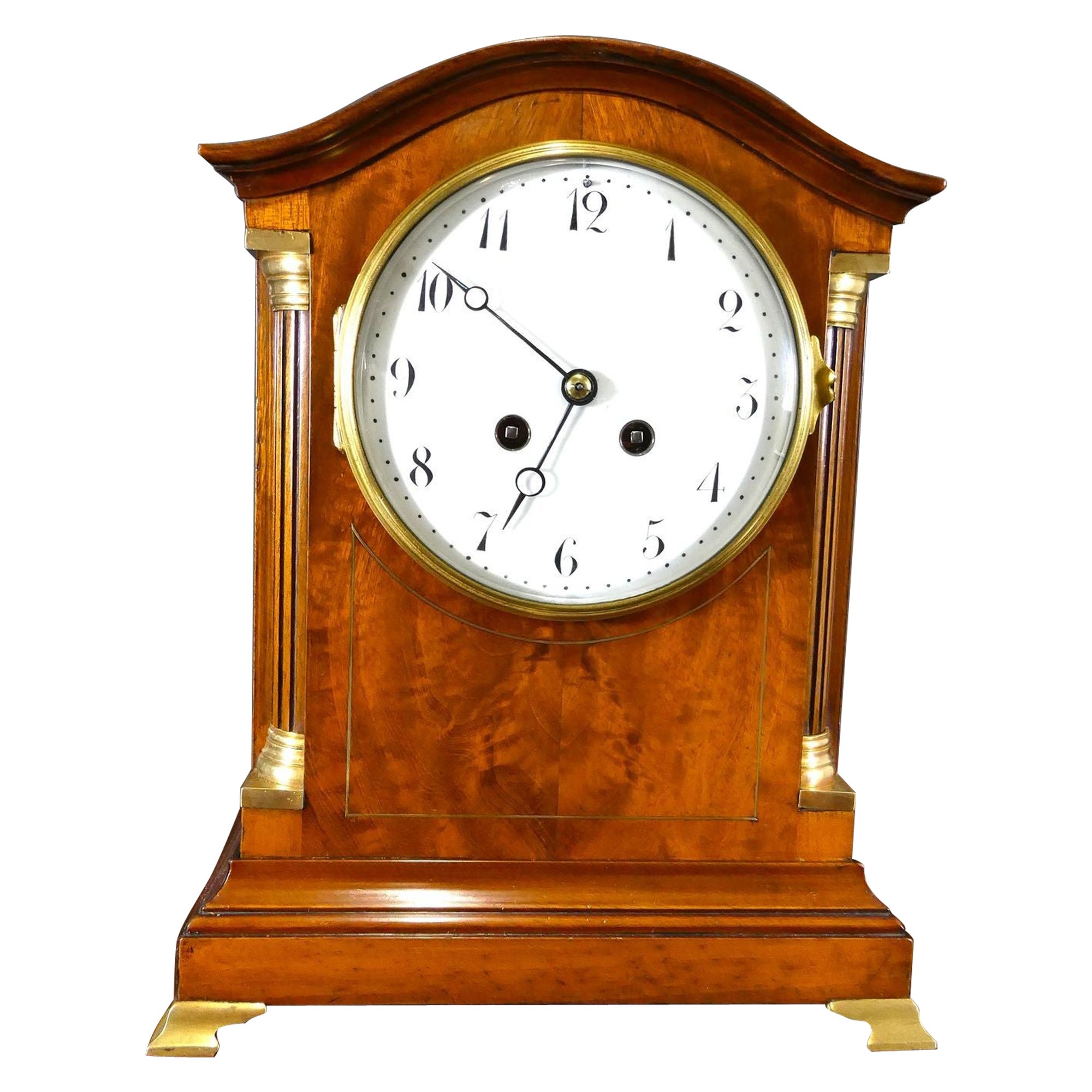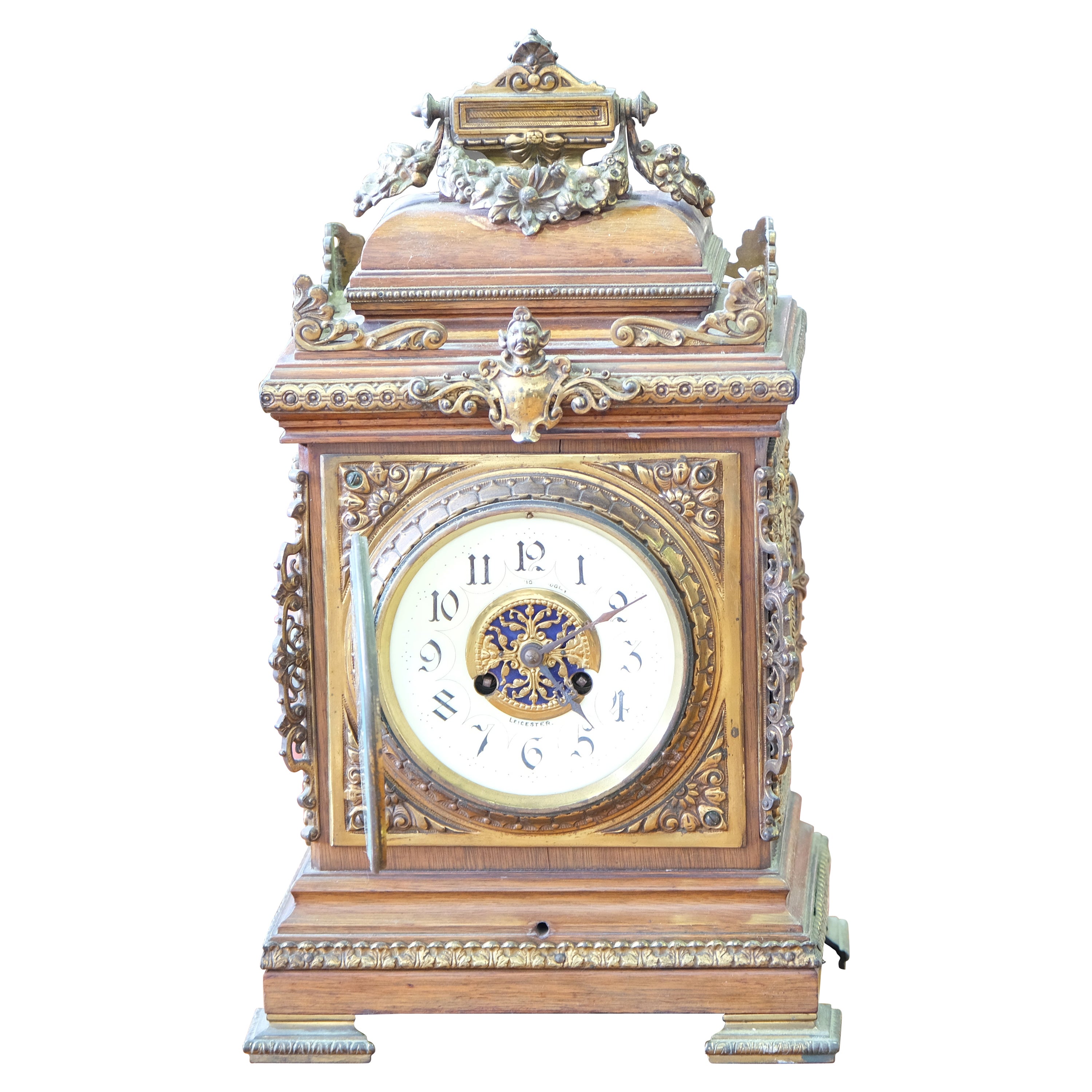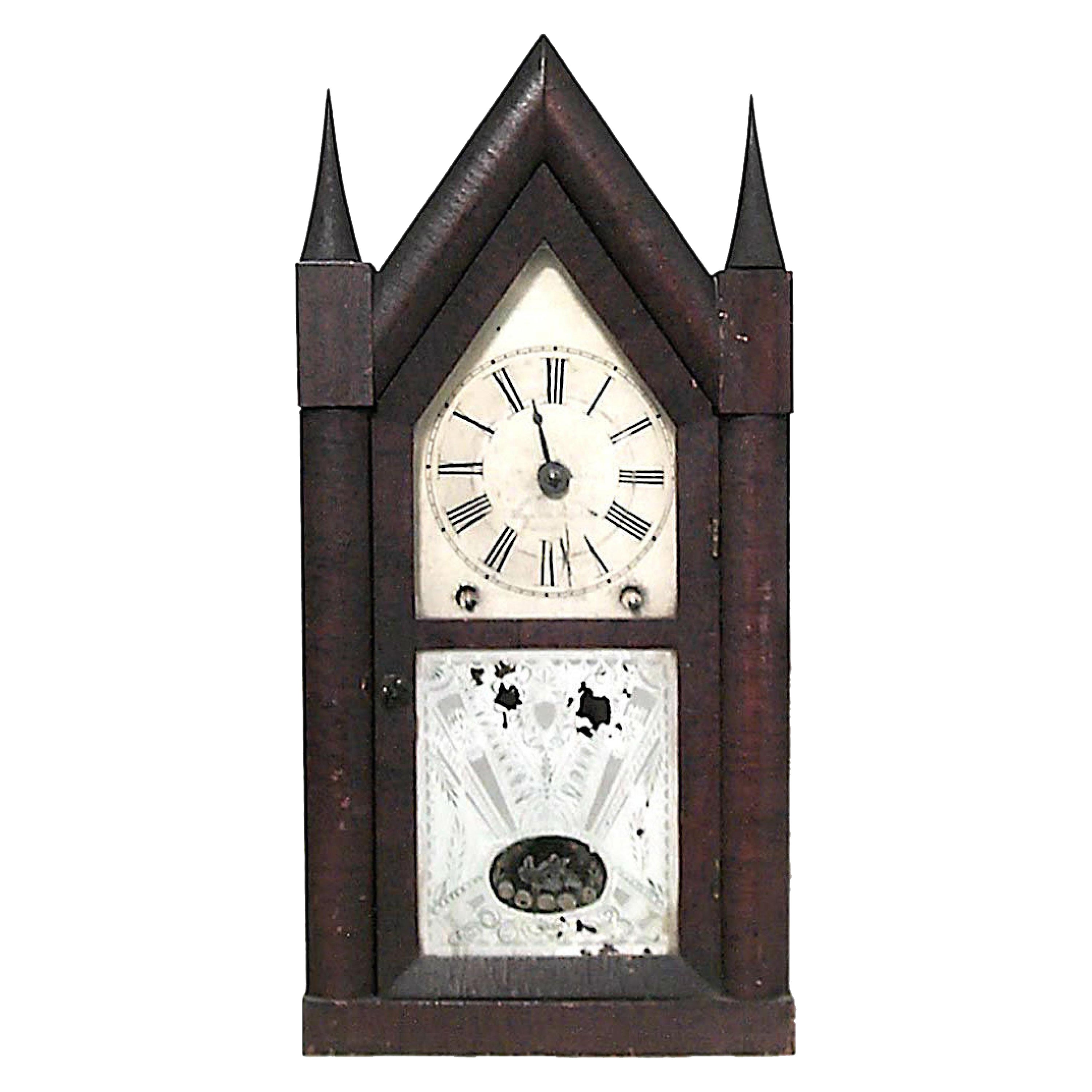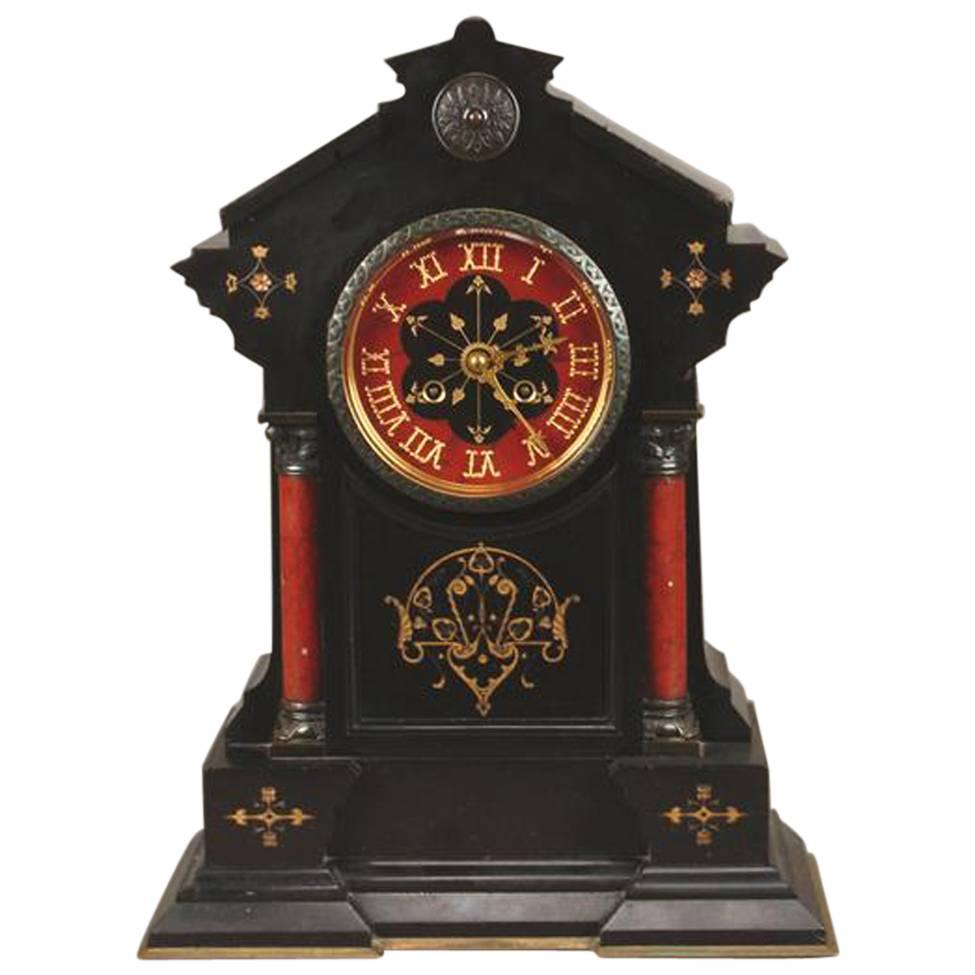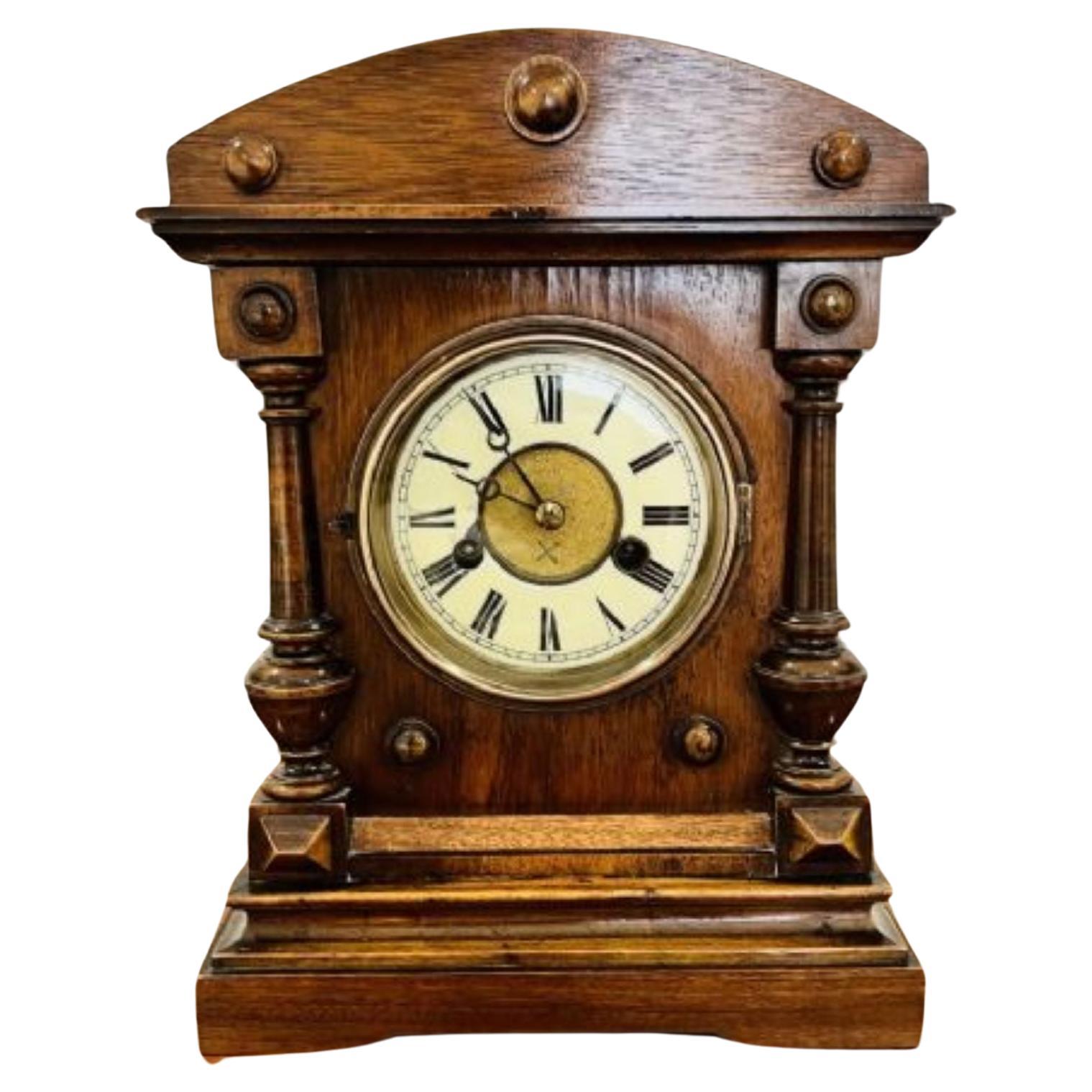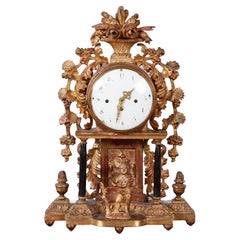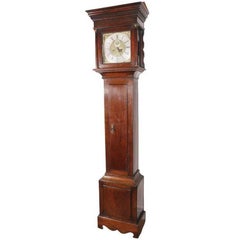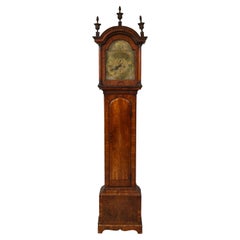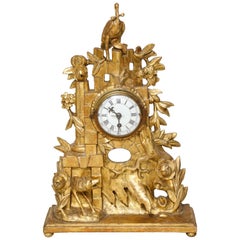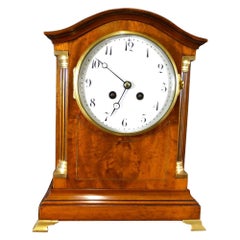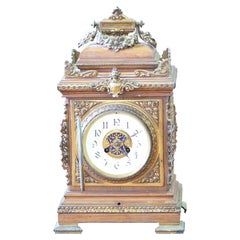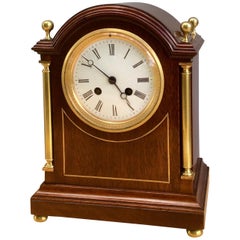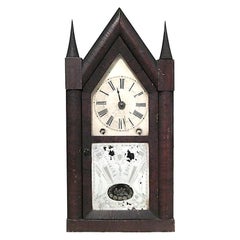Items Similar to English Gothic Fusee Clock
Want more images or videos?
Request additional images or videos from the seller
1 of 13
English Gothic Fusee Clock
$5,000
£3,742.43
€4,324.42
CA$6,933.33
A$7,766.22
CHF 4,037.57
MX$95,897.24
NOK 51,435.50
SEK 48,624.27
DKK 32,271.17
Shipping
Retrieving quote...The 1stDibs Promise:
Authenticity Guarantee,
Money-Back Guarantee,
24-Hour Cancellation
About the Item
Very fine English early to mid-19th century Gothic clock of important scale having carved and gilt pediment and polychrome decorated case with trefoil tracery decoration, the movement a very fine 8 day timepiece with a fusee movement, unsigned.
The scale of this timepiece indicates it was probably in a public setting rather than made for domestic use. It could well be from a station, bank or municipal building. Perfect running condition (recently cleaned and serviced).
- Dimensions:Height: 43 in (109.22 cm)Width: 31 in (78.74 cm)Depth: 11 in (27.94 cm)
- Style:Gothic Revival (Of the Period)
- Materials and Techniques:
- Place of Origin:
- Period:
- Date of Manufacture:circa 1830
- Condition:Wear consistent with age and use. Movement in perfect running order. One finial replaced and one section of molding later.
- Seller Location:Greenwich, CT
- Reference Number:Seller: tjiptuxkeeud1stDibs: f798318111912750591fs
About the Seller
5.0
Recognized Seller
These prestigious sellers are industry leaders and represent the highest echelon for item quality and design.
Gold Seller
Premium sellers maintaining a 4.3+ rating and 24-hour response times
Established in 1991
1stDibs seller since 2004
268 sales on 1stDibs
Typical response time: 2 hours
Associations
The Art and Antique Dealers League of AmericaAntiques Associations Members
- ShippingRetrieving quote...Shipping from: Greenwich, CT
- Return Policy
Authenticity Guarantee
In the unlikely event there’s an issue with an item’s authenticity, contact us within 1 year for a full refund. DetailsMoney-Back Guarantee
If your item is not as described, is damaged in transit, or does not arrive, contact us within 7 days for a full refund. Details24-Hour Cancellation
You have a 24-hour grace period in which to reconsider your purchase, with no questions asked.Vetted Professional Sellers
Our world-class sellers must adhere to strict standards for service and quality, maintaining the integrity of our listings.Price-Match Guarantee
If you find that a seller listed the same item for a lower price elsewhere, we’ll match it.Trusted Global Delivery
Our best-in-class carrier network provides specialized shipping options worldwide, including custom delivery.More From This Seller
View AllBohemian Gilt Wood Mantel Clock
Located in Greenwich, CT
Fine giltwood mantel or shelf clock with carved floral basket crest, the enamel dial with gilt hour and minute hands, surmounted by carved grape vines and standing on platform base w...
Category
Antique 1830s Czech Rococo Mantel Clocks
Materials
Brass, Enamel
English Oak Tallcase Clock
Located in Greenwich, CT
Fine 18th century English tallcase clock, the 8 day movement with brass face and silvered chapter ring by John Glover, London, the case of provincial manuf...
Category
Antique 1760s English Georgian Clocks
Materials
Brass
Georgian Walnut Tall Case Clock by Thomas Smith of Norwich
Located in Greenwich, CT
Fine 8 day tall case clock by Thomas Smith of Norwich, the three original giltwood urn finials over arched hood having molded cornice, the brass dial with engraved boss reading "Tho’s Smith - Norwich" the dial with second dial and calendar ring...
Category
Antique Mid-18th Century English George II Grandfather Clocks and Longca...
Materials
Brass
Rococo Giltwood Clock
Located in Greenwich, CT
Fine 18th century rococo carved and giltwood shelf clock, the crest with stork holding a bone in his beak pearched on a romantic castle ruin with carved...
Category
Antique Late 18th Century Austrian Rococo Mantel Clocks
Materials
Giltwood
$4,900
Palladian Georgian Architectural Cabinet
Located in Greenwich, CT
Rare early 18th century walnut Palladian diminutive cabinet of architectural form having a pedimented top over pair of pilasters flanking a single a...
Category
Antique Early 18th Century European Palladian Models and Miniatures
Materials
Oak, Walnut
Early Italian Baroque Andirons
Located in Greenwich, CT
Lovely pair of early Italian baroque bronze and wrought iron andirons having suppressed ball finials over balustrade shafts and standing on elegant high scrolled legs ending in flare...
Category
Antique 1670s Italian Baroque Andirons
Materials
Bronze, Wrought Iron
You May Also Like
Victorian Mahogany French Mantel Clock
Located in Norwich, GB
Victorian Mahogany French Mantel Clock
Victorian mantel clock housed in a flame mahogany case with serpentine shaped top, reeded pillars with brass capitals and brass line inlay dec...
Category
Antique 1890s French Mantel Clocks
Materials
Mahogany
English Bracket Clock, 19th Century
Located in Southall, GB
A fine quality 19th century English bracket clock of the Georgian era. The classical styled numerals and gilt topped case are surmounted by a floral sculpture. Marked on the face 'Le...
Category
Antique 19th Century European Mantel Clocks
Materials
Bronze
$7,290 Sale Price
20% Off
Victorian Mahogany Cased French Striking Mantel Clock
Located in Norwich, GB
Mahogany mantel clock in a break arch case with brass columns to either side, brass inlay to the front and surmounted by four brass finials.
Beautifully d...
Category
Antique 1870s French Victorian Mantel Clocks
Materials
Mahogany
Victorian Mahogany Mantel Clock
Located in Queens, NY
American Victorian mahogany mantel clock with steeple top. (not working)
Category
Antique Late 19th Century American Victorian Table Clocks and Desk Clocks
Materials
Mahogany
Morris and Co, In the style of, An Aesthetic Movement Gilt Marble Mantle Clock
By Bruce James Talbert
Located in London, GB
Morris and Co, In the style of, An Aesthetic Movement noir belge and red Marble gilded mantle or bracket clock with an important Gay Vicarino & Co French...
Category
Antique Mid-19th Century British Gothic Revival Mantel Clocks
Materials
Marble, Belgian Black Marble
Antique Victorian walnut mantle clock
Located in Ipswich, GB
Antique Victorian walnut mantle clock having a circular dial with an 8 day movement striking the hour and half hour on a gong in a carved walnut case
Please note all of our clocks ar...
Category
Antique Early 19th Century Victorian Mantel Clocks
Materials
Brass
More Ways To Browse
English Gothic Revival Furniture
8 Day Mantel Clock
Antique 8 Day Mantel Clock
Antique Clocks Made In England
Mantel Clock England
Fusee Clock
Antique Fusee Clock Clocks
Antique Fusee Clock Movement
Gothic Trefoil
Antique English Mantel Clock
Polychrome Clock
Antique Gothic Clock
English Fusee Clock
Gothic Clocks
Antique Bank Clock
Antique Station Clocks
Gothic Fusee Clock
Antique French Ormolu Figural Clock
